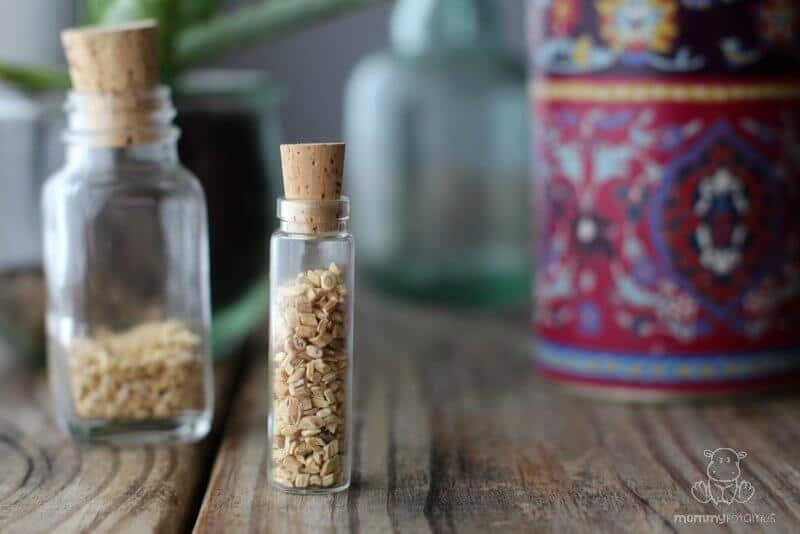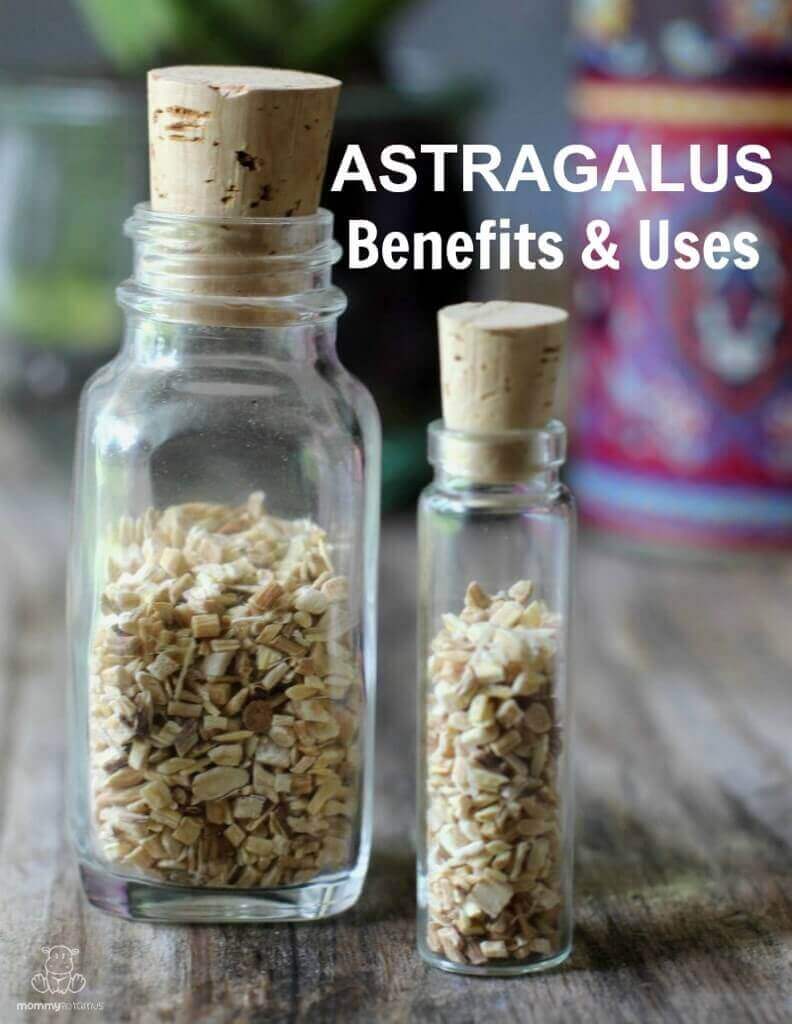
Astragalus is a sweet, warming herb with golden roots and thousands of years of history as a therapeutic herb. It’s Chinese name, huáng qí, means “yellow leader” because the yellow root is considered one of the most important herbs in Traditional Chinese Medicine (TCM).
So what makes it so special? For starters, it’s considered safe for people of all ages (more on that later) and offers profound benefits for the immune system, energy levels and more. We’ll dive into its many benefits soon, but first here are a few things you need to know:
- Therapeutic species – Although there are over 2,000 species of astragalus, only two are really used in supplements — Astragalus membranaceus (synonym Astragalus propinquus) and Astragalus mongholicus. These are the ones you want to look for when considering a supplement, tea, tincture, etc.
- Part Used – Root
Before we dive into the details, I want to mention that none of these statements have been evaluated by the FDA, this article is not medical advice, and it is not meant to diagnose or treat any condition. As always, please talk with your healthcare provider about any herbs you are considering. Now that we’ve got that out of the way, let’s dive in.
Bioactive Compounds in Astragalus
Astragalus contains a wide range of active constituents that work synergistically together, including:
- Immune supporting and antioxidant-rich polysaccharides such as astragalans I, II, and III. Water extracts such as tea draw out more polysaccharides than alcohol or glycerin-based extracts, which is why astragalus is typically consumed in tea or soup.
- More than 40 saponins, including the potent antioxidants known as astragalosides (there are seven of them – I, II, II, IV, V, VI, and VII). These antioxidants are thought to support the integrity of the respiratory tract.. One study also found that astragaloside Iv may play a role in accelerated wound healing. (1)
- Flavonoids, which are thought to support heart health, longevity, and more
It’s also rich in potassium and magnesium, which is often called “The Magic Mineral,” plus vital trace minerals like copper and manganese.
4 Health Benefits of Astragalus Root
Together, the compounds listed above give astragalus its beneficial properties. Let’s take a look at some of the most well-researched.
1. Immune Support
Astragalus appears to strengthen both nonspecific and specific immunity.” – Medical Herbalism by David Hoffman, FNIMH, AHG
One of the wonderful things about astragalus is that it’s classified as an immune modulator, meaning that it helps to restore balance in both underactive (immune compromised) and overactive (autoimmune disease) systems. (2)
“It is extremely safe and well tolerated, and it is particularly useful for supporting the immune system,” writes Donald R. Yance, CN, MH, RH(AHG). (3)
He also writes:
I classify astragalus as a secondary adaptogen, not a primary adaptogen, because it does not have a direct or profound effect on the neuroendocrine system. However, for persons under immunological stress (from chemotherapy, surgery, traveling, lack of sleep, or debilitation due to an acute infection) I consider it a primary adaptogen.” (3)
Studies suggest that it supports our reticuloendothelial system, which is a diffuse system of cells that destroys pathogens via eating them (phagocytosis). (2)
Like many herbs, modern research seems to confirm traditional use. For example, “In China, astragalus has enjoyed a long history of use in traditional medicine to strengthen Wei Qi, or ‘defensive energy,’ or in Western terms, the immune system.” (3)
Because of its immune supportive properties, astragalus is a favorite herb to include in tinctures and teas during cold and flu season.
2. Supports Energy Levels
It has long been used to support immune function, and “is also regarded as a potent tonic for increasing energy levels.” (source) This may be due to its positive impact on the mitochondria, which serve as the “batteries” that power our cells. (4)
As I shared in this post on rebooting our body’s stress response, when we get stuck in stress mode, our bodies “steal” a hormone called pregnenolone to make extra cortisol. Pregnenolone is often called the “mother hormone” because it’s used to make all kinds of hormones – estrogen, progesterone, testosterone, DHEA, and of course cortisol.
Adaptogenic herbs like astragalus help the body maintain energy levels making it more adaptive to stress. Here’s a guide to getting started with adaptogens.
3. Optimizes Your Biological Age
In one study, researchers found that a compound within astragalus positively influences production of the telomerase (hTERT) enzyme. (5) (6) This enzyme maintains or lengthens telomeres, which is significant because telomeres directly impact cellular aging.
Telomeres are sometimes compared to the plastic ends on shoelaces that prevent them from fraying, only instead of protecting laces they protect our DNA. Here’s how an article in Scientific American explains it:
Telomeres consist of up to 3,300 repeats of the DNA sequence TTAGGG. They protect chromosome ends from being mistaken for broken pieces of DNA that would otherwise be fixed by cellular repair machinery. But every time our cells divide, the telomeres shrink. When they get short enough, our cells no longer divide and our body stops making those cells.
The faster the telomeres shrink, the more quickly we age at a cellular level. By helping to maintain telomere length, astragalus is thought to support optimal aging.
4. Seasonal Allergy Support
This small, double-blind, placebo controlled study found that taking astragalus for six weeks was helpful for seasonal allergies.
Other herbs and supplements may be beneficial, too – I’ve covered them in this article on natural remedies for seasonal allergies.
Possible Benefit: May Support Healthy Blood Sugar Levels
A 2016 meta-analysis suggests that astragalus may improve blood sugar metabolism for some people. (7) However, more studies are needed to confirm this effect.
How To Use Astragalus
Astragalus is often taken daily (or nearly so) during cold and flu season to support healthy immune function. Itcan be used alone or combined with complementary adaptogens such as licorice root, ginseng, shizandra berry and cordyceps, among others. I include it in my adaptogen chai tea recipe and take it as a tincture when I need energy or immune support.
In terms of how much to take, herbalist Rosalee de la Foret writes that “Astragalus works best when taken in higher amounts for a long period of time. I recommend 15-30 grams of the dried root daily.” (8) In terms of tablespoons, that’s approximately 5-10 tablespoons.
You’ll find instructions below for making astragalus tea and tincture, as well as how to incorporate it into nourishing soups. Here’s are some recommendations for taking them from Adaptogens: Herbs for Strength, Stamina and Stress Relief, which was written by ethnobotanist David Winston and herbal expert Steven Maimes
- For a 1:5 tincture (recipe below) – 40-80 drops, three times per day. Another option is to purchase a pre-made astrgalus tincture and follow the instructions that come with it.
- As a decoction – One cup up to three times per day.
How To Make Astragalus Tea
Roots take a little coaxing to release their therapeutic properties, so astragalus is best prepared as a long-simmered tea (decoction).
In Adaptogens: Herbs For Strength, Stamina and Stress Relief, ethnobotanist David Winston and herbal expert Steven Maimes recommend up to three cups per day.
 Print Pin0 from 0 votes
Print Pin0 from 0 votes
Astragalus Tea Recipe
Astragalus has been used in Chinese medicine for thousands of years to support immune function, energy levels, & more. Here's how to brew it into a delicious tea. Prep Time 1 hour Total Time 1 hour Servings 1 Author Heather Dessinger
- 2 tsp dried astragalus root (cut and sifted)
- 1½ – 2 cups water
- Place roots and water in a small pot and bring to a boil.
- Reduce heat, cover, and simmer for 20-30 minutes.
- Once it's done simmering, remove the pot from heat and allow it to steep for 30 more minutes. Strain and serve.
 Tried this recipe? Mention @mommypotamus or tag #mommypotamus!
Tried this recipe? Mention @mommypotamus or tag #mommypotamus!
How To Make Astragalus Tincture
Although water is better at extracting the valuable polysaccharides found in astragalus, alcohol is better at extracting terpenes and other valuable constituents. For that reason some people opt for both water and alcohol-based extracts.
Ethnobotanist David Winston and herbal expert Steven Maimes suggest 40-80 drops of a 1:5 tincture, three times per day. Here’s how to make a 1:5 tincture.
Ingredients:
- 1 ounce dried astragalus root (by weight)
- 5 ounces of 60 proof or higher alcohol (by volume)
Instructions:
Place astragalus root and alcohol in a jar and cover. Place in a dark cabinet and allow the mixture to infuse for six to eight weeks, shaking occasionally.
Another option is to purchase pre-made astragalus root tincture and follow the instructions on the label after talking with your healthcare provider.
Adding Astragalus To Soup
Traditionally, sliced astragalus root is often simmered in soups for 15-30 minutes, then removed before serving. It’s fine to use cut and sifted astragalus, too, but more challenging to sift out.
Using Astragalus Root Powder In Smoothies
Ground astragalus root can be added to smoothies – 1-3 teaspoons is a good place to start.
Frequently Asked Questions
Below are answers to the most common questions I’ve received over the years. If you don’t see your question mentioned, please leave it in the comments below!
Does astragalus have any side effects?
In Adaptogens in Medical Herbalism, Donald R. Yance, CN, MH, RH(AHG) describes it as “extremely safe and well tolerated.” In fact, it has been used in combination with some therapies to reduce negative effects.
However, the Botanical Safety Handbook classifies astragalus as a Safety Class 1B herb, which means it may alter how medications affect the body. Interactions have not been proven, but they are biologically plausible. For example, due to its immune supporting properties, astragalus may counteract immune suppressing drugs. It may also increase the effect of blood pressure or blood sugar lowering medications.
This safety rating only applies to the two varieties that are cultivated for therapeutic purposes – Astragalus membranaceus and Astragalus mongholicus. Certain varieties, such as A. lentiginosis or A. mollissimus (locoweed), are toxic and should be avoided.
Can children take astragalus?
“Astragalus is also a great tonic herb for small children. It can be added to an adaptogenic formula for immune support as a preventative medicine when children are in school or when the weather changes.” (3)
Is astragalus safe during pregnancy and breastfeeding?
Though it is a Safety Class 1B adaptogen, no studies are available on the safety of using astragalus during pregnancy and breastfeeding. Itis generally considered safe and appropriate for “young, old, weak, strong, and even small children and infants (dosage would need to be adjusted accordingly).” (3)
Though renowned herbalist Susun Weed does not mention breastfeeding specifically, she does recommend it to postpartum mothers whose children were born by cesarean. (9)
Have a question about astragalus? Please leave a comment below!

Want more research-backed natural remedies?
No problem, I’ve created a free ebook for you – Kitchen Apothecary: 25+ Natural Remedies Using Ingredients From Your Pantry – as a gift for signing up for my newsletter. You’ll also get updates when I post about safe essential oils for pregnant/breastfeeding mamas, exclusive gifts and coupons (I was able to give away a jar of free coconut oil to anyone who wanted it recently!), plus other goodies.
Sign up using the form below.
This article was medically reviewed by Dr. Scott Soerries, MD, Family Physician and Medical Director of SteadyMD. As always, this is not personal medical advice and we recommend that you talk with your doctor.
Sources
1. Chen, X et. al. (2012) The healing and anti-scar effects of astragaloside IV on the wound repair in vitro and in vivo
2. Hoffman, David (2003) Medical Herbalism: The Science Principles and Practices Of Herbal Medicine
3. Yance, Donald (2013) Adaptogens in Medical Herbalism
4. Xing-Tai, Li (2012) Mitochondrial Protection and Anti-aging Activity of Astragalus Polysaccharides and Their Potential Mechanism
5. Bernardes de Jesus, B (2011) The telomerase activator TA-65 elongates short telomeres and increases health span of adult/old mice without increasing cancer incidence
6. Ping, Liu et. al. (2017) Anti-Aging Implications of Astragalus Membranaceus (Huangqi): A Well-Known Chinese Tonic
7. Tian, H et. al. (2016) The effect of Astragalus as an adjuvant treatment in type 2 diabetes mellitus: A (preliminary) meta-analysis
8. de la Foret, Rosalee (2020) Herbs for Immunity
9. Weed, Susun (2008) Childbearing & Mothering After A Cesarean




